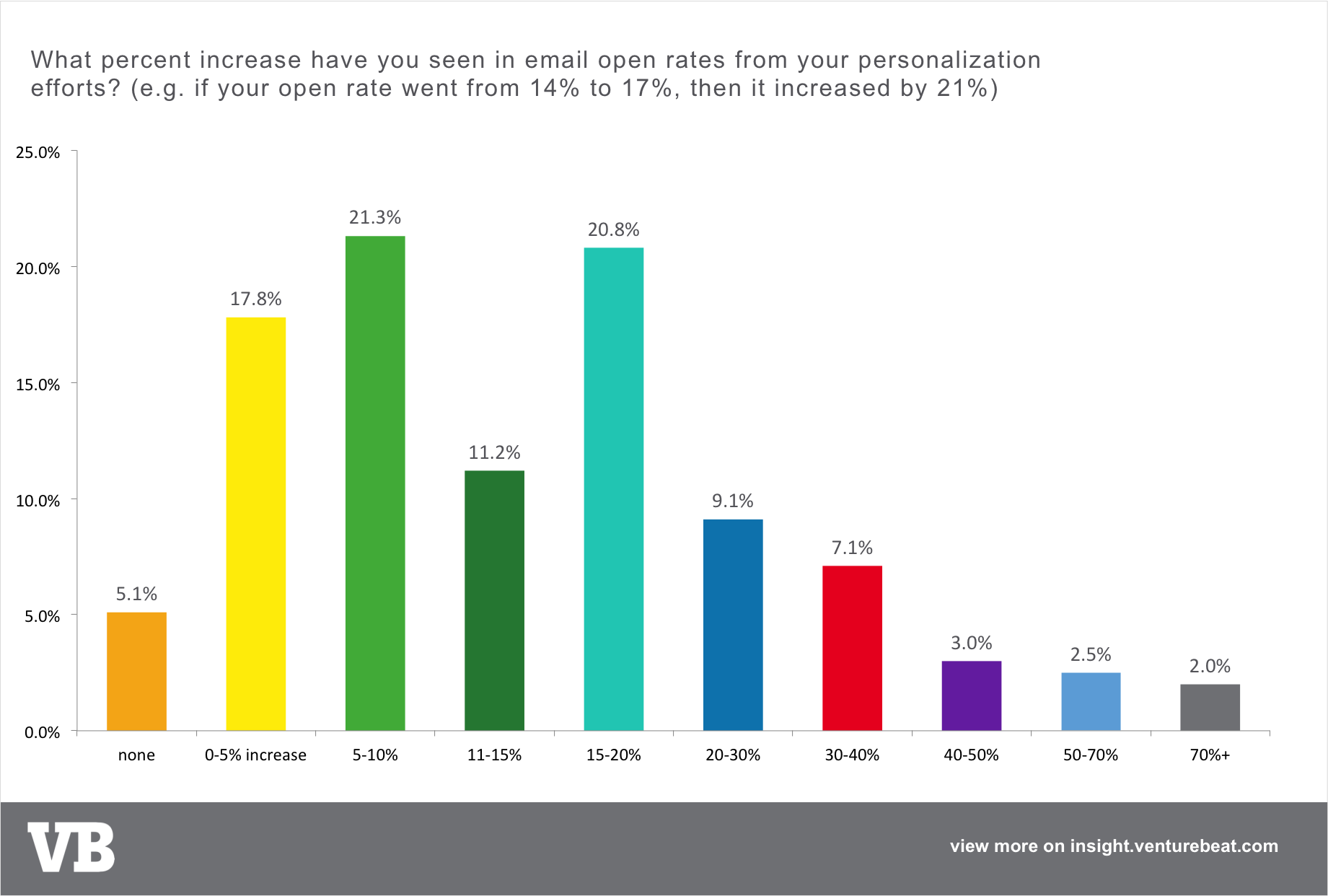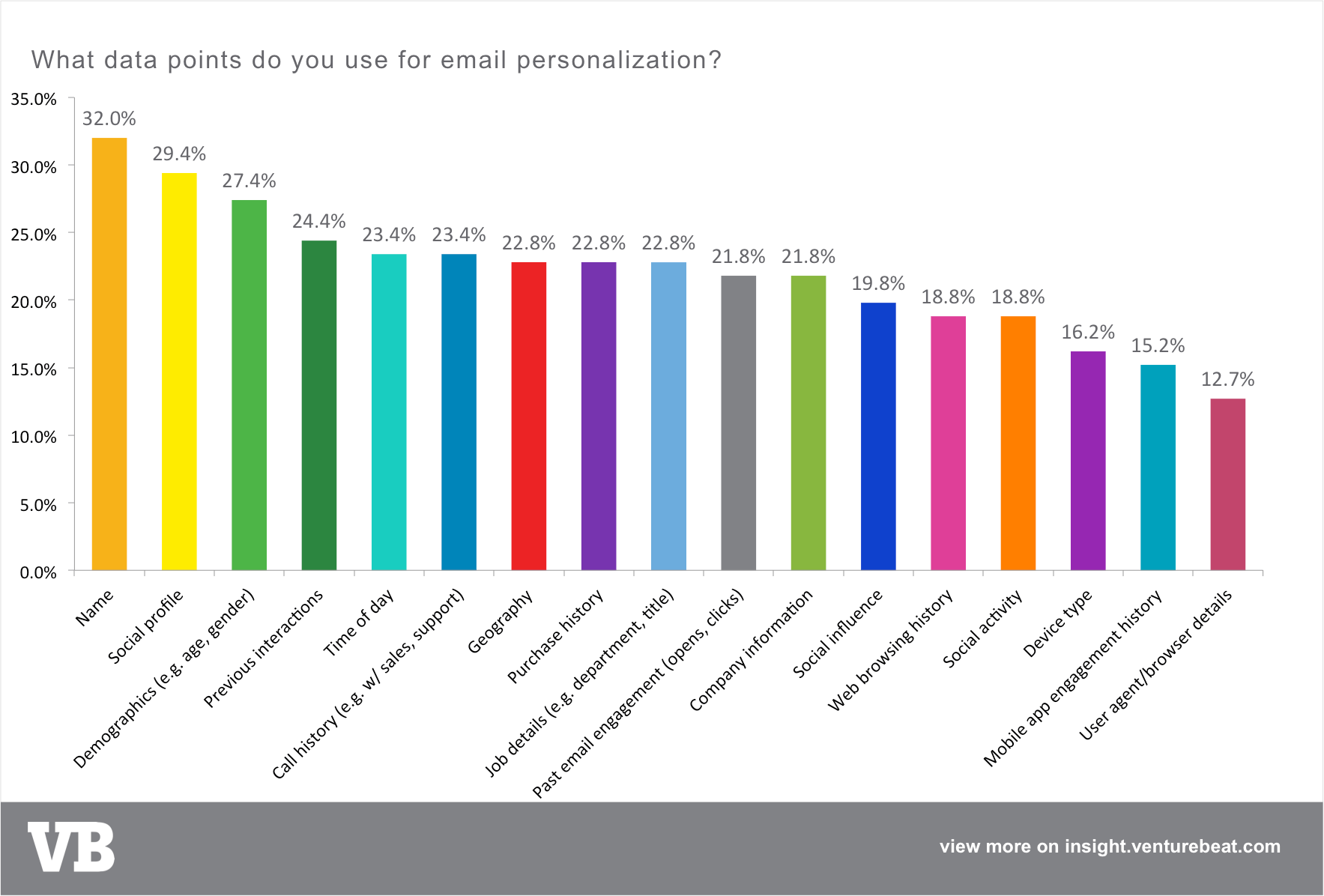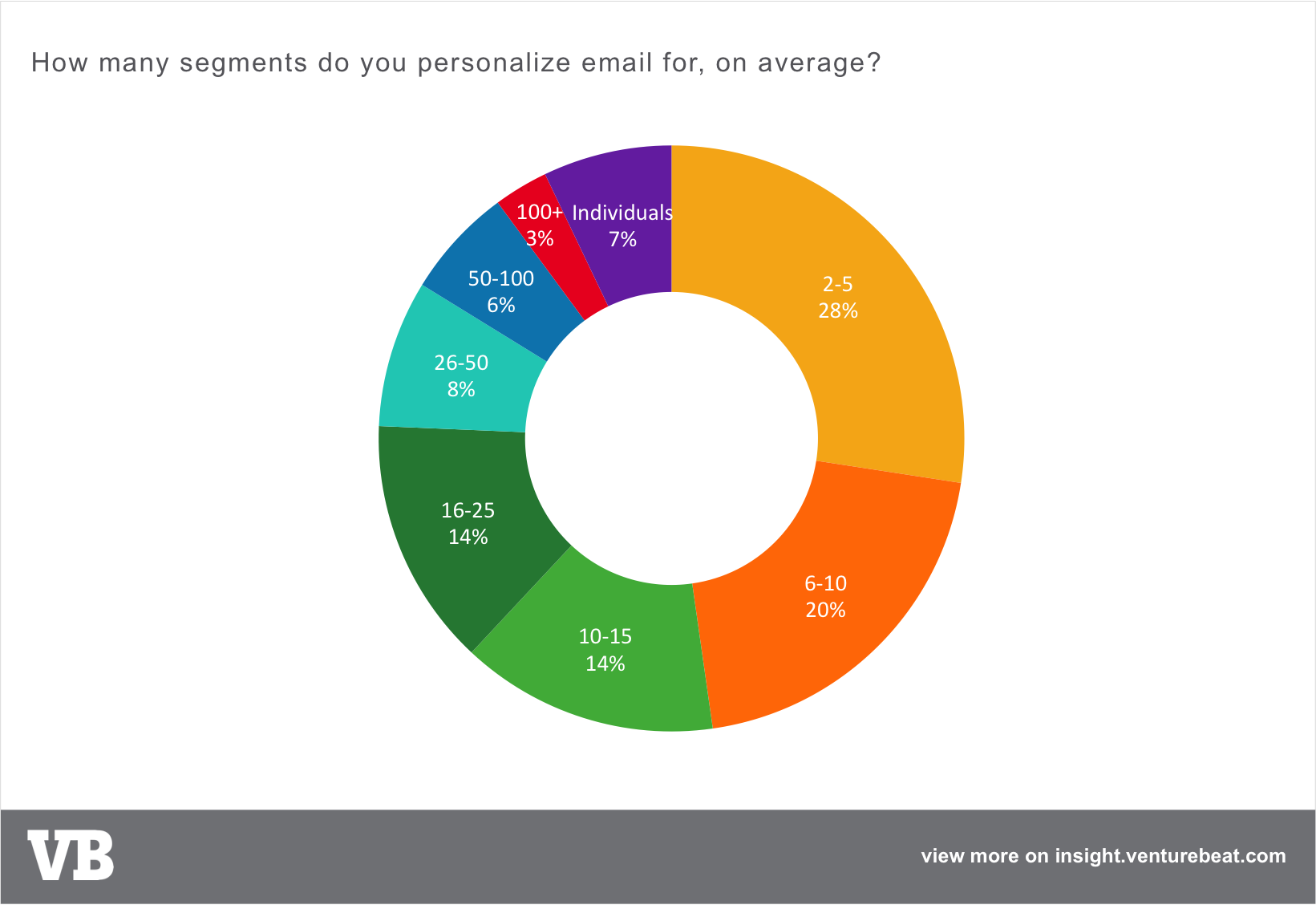Marketers know email isn’t dying. In fact, for the majority, it remains the channel that delivers the greatest return on investment (ROI).
But it is getting harder.
Consumers have come to expect greater relevance from every interaction — and they are blocking and unsubscribing from irrelevant messages.
Email personalization addresses consumer demands for relevance, as well as marketers’ need to drive qualified traffic while maintaining low unsubscribe rates.
AI Weekly
The must-read newsletter for AI and Big Data industry written by Khari Johnson, Kyle Wiggers, and Seth Colaner.
Included with VentureBeat Insider and VentureBeat VIP memberships.
We’ve been surveying you, our readers, to understand who is personalizing email, how you’re doing it, and what results you’re seeing.
Early results are interesting.
95 percent of nearly 200 marketers say that email personalization increases email open rates, and almost as many see increases in click-through rates.

It’s also fascinating to see what data types are being used for email personalization. Here, we saw several surprises: For one, while “name” is at the top of the list, it is not as commonly used as I would have guessed. And just as surprising, social profile data is second most-used.

Early data also shows that customer segmentation is a mixed bag. Over a quarter (28 percent) are only targeting between 2-5 segments, but many are segmenting to a much greater degree, with 7 percent personalizing to the individual level.

Are you personalizing your emails? If so, how are you doing it? What data are you using? Are you segmenting audiences by rules, or using machine learning?
Take our email personalization survey, and we’ll share the data with you.
